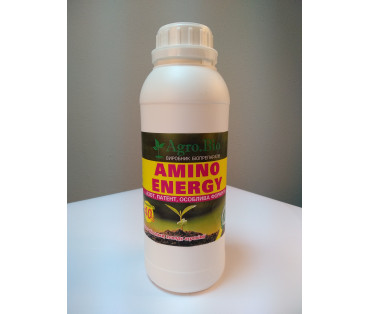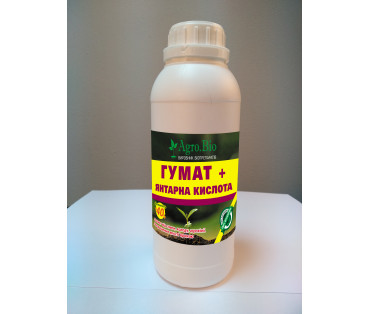Fulvic acids. Structure, composition and formation of fulvic acids
Fulvic acids (FA) are the mixture of weak organic acids of the aliphatic and aromatic series, which dissolve in water at all levels of pH (sour, neutral and alkaline). Their composition and form are very variable. The molecular weight of the FA (1 000 - 10 000) is less than that of HA, and the oxygen content is twice higher. Due to the relatively small size the FA molecules can easily penetrate the plants roots, stems and leaves, contributing useful trace elements. Fertilizers used in the form of aerosols and containing FA in the form of chelates with trace elements, at certain stages of plant growth can be effective promoters of its productivity increasing. Under plants foliar treatment FAs deliver trace elements to the metabolic sections of cells. They are compatible with the plant and thus not phytotoxic when applied at relatively low concentrations.
Some researchers consider fulvic acids as the most important part of the soil organic matter. However, their high solubility in water puts into question the possibility of their long existence in natural objects (excluding groundwater). Moreover, it has been found that enzymes carrying out carbohydrate, nitrogen and phosphorus exchange are strongly linked to humic acids and are released from the soil together with them maintaining their own activity. Most part of the hydrolytic enzymes is connected with humic acids. So the activity of invertase in the presence of humic acids in 5-6 times, urease in 3.5 times, protease in 1.5 times higher than in the presence of fulvic acids.
D. Orlov has published a work that forces a new look at this problem recently. He came to the conclusion that in natural objects – soil, coal, peat and other sources of humic substances – fulvic acids in general do not exist as an independent fraction. Those FA, which were defined as part of the humus substances that transfer into the solution at the treatment of the object (lignite, peat, soil) with alkalies and remain in it after acidification of the solution to pH 2 for deposition of humic acids, are formed in the solution as a result of analycital procedures, which cause partial hydrolysis of high molecular weight humic acids.
Almost all experimental data testify that FA appear only after alkaline or acid hydrolysis of organic matter of investigated objects in general, and humic acids, in particular. Consequently, the analytical determination of the content of fulvic acids shows only a degree of hydrolyzed natural humic acids, regardless of the object of their obtaining.
Further studies conducted by O.S.Yakimenko and F.V.Ulankina, also lead to the conclusion that the formation of fulvic acids happens under effect of humic acids hydrolysis during alkaline extraction.
Thus, the effect of FA can only be considered in cases, when we use humic preparations obtained by treating lignite or peat with alkaline agents, since only after such treatment these products acquire a mixture of humates and fulvates of alkali metals formation.
In addition, we have unpublished data of two independent studies conducted by G. A. Kalabin and O. S. Yakimenko on the fragments of maize coleoptiles, which showed that the growth promoting activity of fulvic acids exerts itself only in combination with the fraction of humic acids. The use of the fulvoacid fraction in its pure form, according to their data, leads not to stimulation, but to the inhibition of growth.
Therefore, discussing the mechanism of humus substances influence on plants, further we will operate with the concept of humic acids, assuming that the FA is an integral part of it.
In addition to soil humic acids are contained in large quantities in brown coal, peat, sapropel and some other organic substances.
Humic acids in soil are linked with other cations, mainly Ca, Mg, Fe, Al. Therefore, they are practically insoluble in water, which allows them to accumulate, forming certain stocks of humus, and then very slowly, in proportion to mineralization and consumption of microorganisms, serve as a source of nutrients, growth promoters, enzymes, vitamins and many other biologically active substances necessary for growth and the development of plants.
In order for humus substances to become available to plants, they must transfer into water-soluble form. This process occurs in the presence of alkali metals and some other elements and compounds with formation of water-soluble salts – humates.
Humatesare the salts of natural humic acids in which the hydrogen ion of carboxyl and (partially) hydroxyl groups is replaced by a metal atom. Natural humates are formed in the soil as a result of the interaction of humic acids with the ions of metals in the soil solution in the form of insoluble salts. They determine its genetic, ecological and agronomic functions. In natural objects, so called caustobioliths – brown coal, peat, sapropel and some types of mudstones – they are contained in fairly large quantities and serve as raw material for the production of water-soluble humates of alkali metals – sodic and potassic humates. Of all humates, only the potassic, sodic and ammonia humates are water-soluble. These humates exert all the positive properties of soil humus substances, but due to their high water solubility, their biological activity increases by a huge ratio, and natural origin determines full ecological safety.
Using the term "humates" in the following, we will mean exactly water-soluble potassic, sodic or ammonia humates.
Read the continuation of an article
Related Products
Amino Energy «Agro.Bio»
Amino Energy "Agro.Bio" is the best anti-stress and plant growth regulator. Stress is always inhibition of plant growth. This is their way of surviving in adverse conditions. Drought, frost, sudden t..
$13.00
Humate + Succinic Acid «Agro.Bio»
Powerful, modern seed germination stimulator with excellent effect and low cost per hectare norm. Modern crop production technologies require the appearance of fast and uniform seedlings. In order to..
$12.00
Related Articles
Physiological principles of technology of humic preparations on the example of potassium humate
Based on a large number of works in the World (including L.A. Khristeva), it can be concluded that the use of humic preparations, which have been studied until recently, has a double meaning.On the on..
Comparative efficiency of potassium humate and an equivalent set of mineral fertilizers
Trial batches of humic fertilizers were transferred for study and testing to our research center in the Kherson region. We present the results of those field experiments that allow us to judge the ..
Nutrition of Higher Plants by Organic and Synthetic Compounds and Micronutrients
Plant nutrition is a fundamental issue in agriculture, so clarifying the specifics of what plants consume is one of the most important tasks of agricultural biological science. ..





